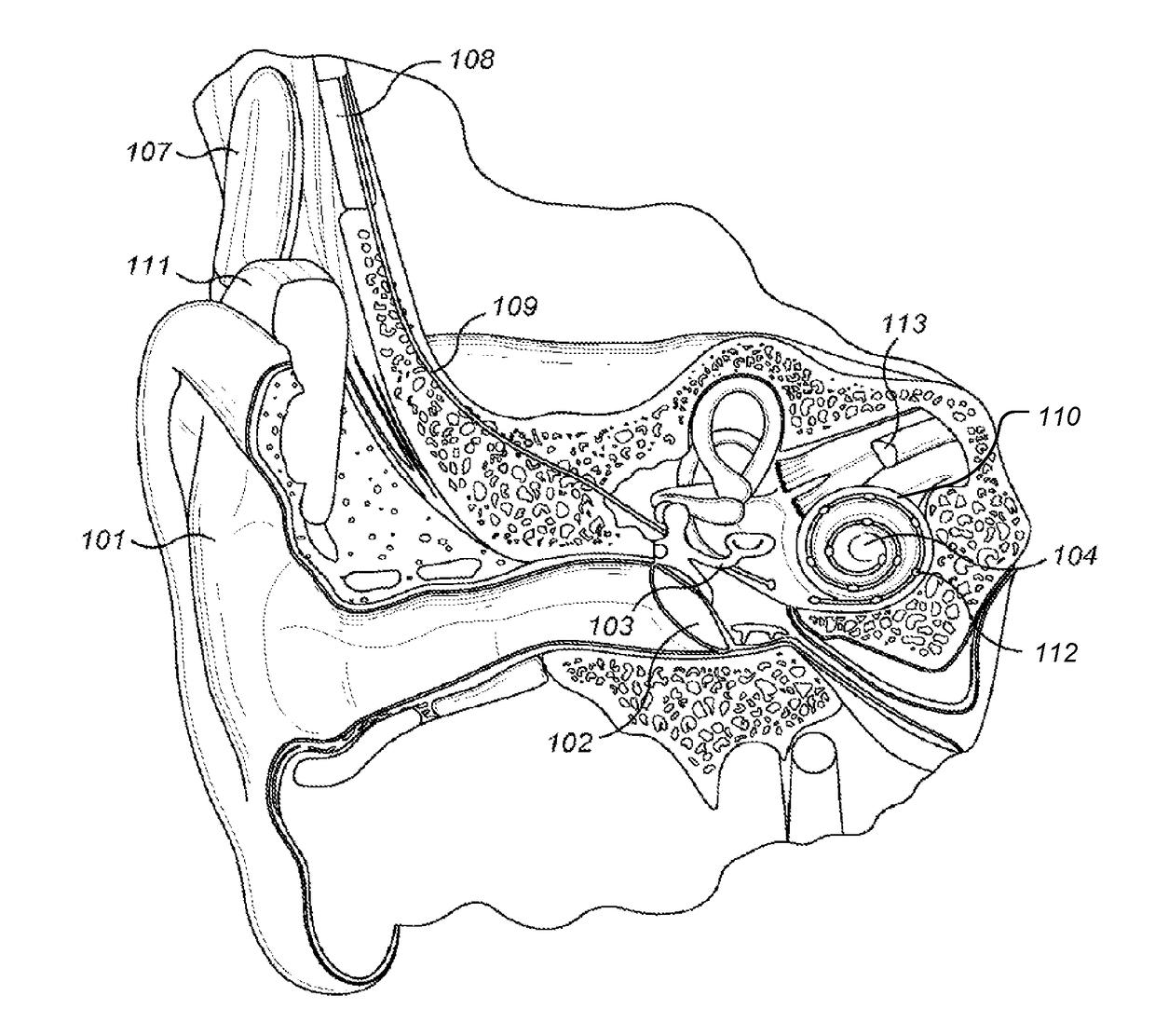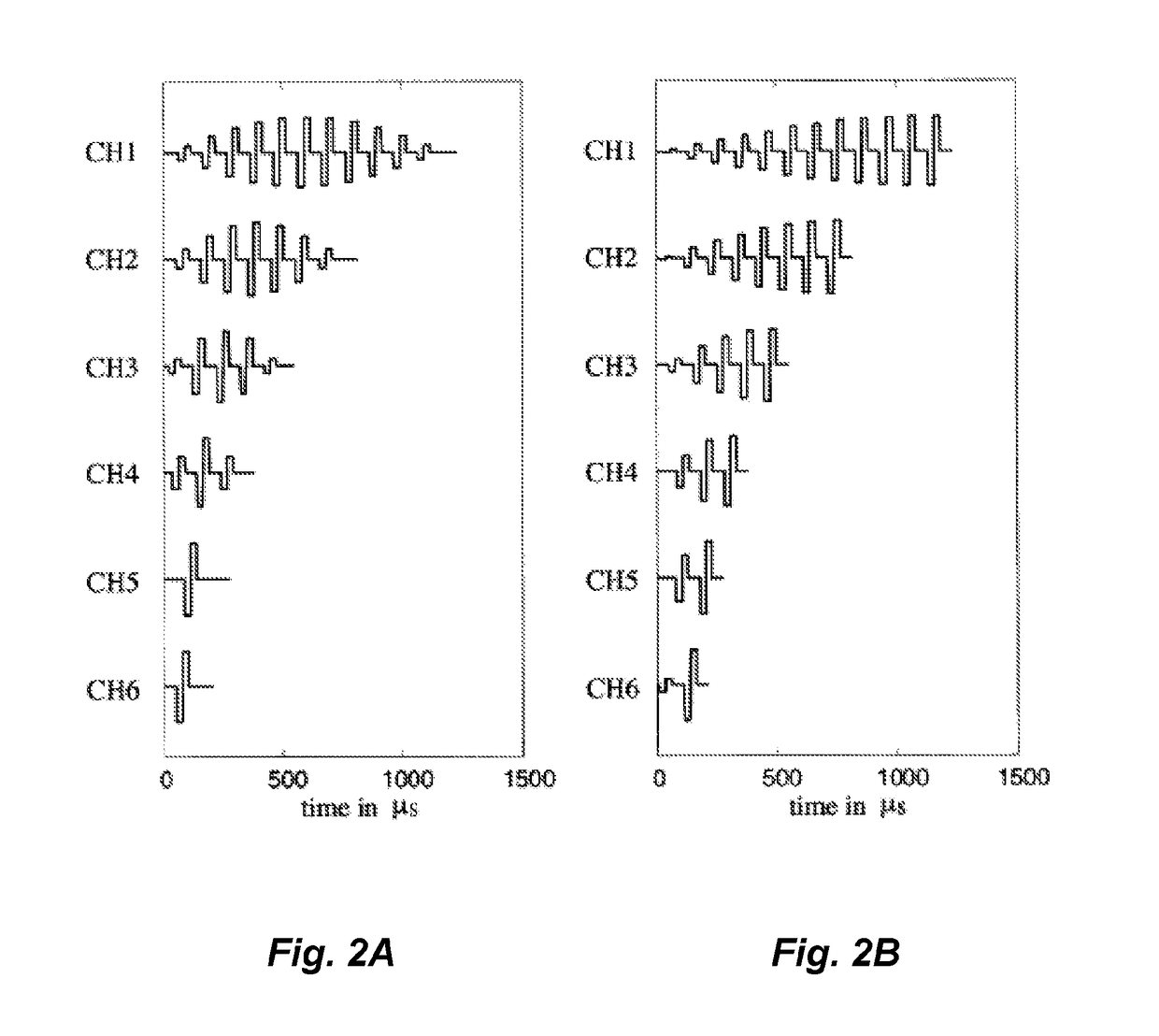Interaural Coherence Based Cochlear Stimulation Using Adapted Envelope Processing
- Summary
- Abstract
- Description
- Claims
- Application Information
AI Technical Summary
Benefits of technology
Problems solved by technology
Method used
Image
Examples
Embodiment Construction
[0040]Parameters of a given cochlear implant signal coding strategy might not be optimal for all listening conditions. For example, in noisy conditions some coding strategies might perform better than others since temporal fine structure typically is more affected by noise than is the band pass signal envelope. It would be beneficial to switch from one coding strategy to another, depending on listening conditions. The switching could be performed in small increments so that the transition happens in a smooth morphing from one coding strategy to the other. The audio input signal is monitored and analyzed to estimate one or more key features that are present. Based on the key feature(s), the signal coding strategy is automatically modified.
[0041]As an example of a key feature, the signal to noise ratio (SNR) of the audio input signal can be estimated. It is assumed that event-based coding strategies that transmit temporal fine structure of the input signal (such as FSP by MED-EL) are ...
PUM
 Login to View More
Login to View More Abstract
Description
Claims
Application Information
 Login to View More
Login to View More - R&D
- Intellectual Property
- Life Sciences
- Materials
- Tech Scout
- Unparalleled Data Quality
- Higher Quality Content
- 60% Fewer Hallucinations
Browse by: Latest US Patents, China's latest patents, Technical Efficacy Thesaurus, Application Domain, Technology Topic, Popular Technical Reports.
© 2025 PatSnap. All rights reserved.Legal|Privacy policy|Modern Slavery Act Transparency Statement|Sitemap|About US| Contact US: help@patsnap.com



